
Aromatherapy and Essential Oils for Nausea and Vomiting
Article Revised 01/12/24
Essential Oils and Aromatherapy for Nausea
Aromatherapy and essential oils can be a great complement or alternative to other more widely used medications for treating symptoms of nausea and vomiting, and they don’t come with the same negative side effects, habit formation, or price tags. In this article, we’ll take a look at some of the different causes of nausea, as well as which essential oils are best at mitigating these symptoms.
Aromatherapy and essential oils have been proven safe and effective in clinical trials at relieving symptoms of nausea and vomiting in clinical settings, and we’ll take a look at some of the mechanisms of action and how they actually work on a biochemical level in this article as well.
What are safe and effective essential oils for nausea relief?
While countless essential oils have anecdotal evidence supporting their efficacy at mitigating symptoms of nausea and vomiting, here are a few of the ones with significant or growing scientific evidence supporting these antiemetic properties.
Spearmint
Plants in the mint family containing menthol are some of the most widely tested and supported antiemetic essential oils, and spearmint is one of the more prominent of the bunch. They have been used since ancient times for a variety of forms of symptom relief, many of which are related to symptoms of nausea and the gastrointestinal system in general.
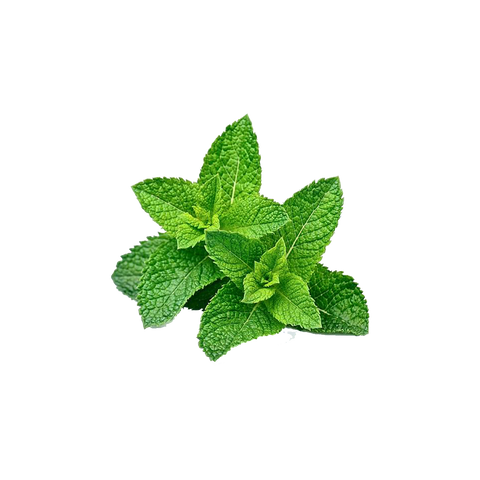
Ginger
Another plant with both a rich history of pre-medicinal use, as well as a thorough modern history of rigorous clinical testing, is ginger. Ginger contains several compounds known to have scientifically-supported antiemetic properties, especially in the contexts of pregnancy- and chemotherapy-induced nausea and vomiting. These include zingerol, shogaol, and 6-, 8-, and 10- gingerol.

Lavender
The key active component of lavender essential oils, linalool, a swiss army knife of sorts when it comes to the terpenoids found in essential oils and their scientifically demonstrated therapeutic properties, has been shown to ease symptoms of nausea, as well as anxiety, pain, and a whole list of others. Here is an excellent graphic depicting the mechanism of certain other constituent compounds in lavender essential oils and their antiemetic effects in mouse models.

Chamomile
Although less studied than others, most people are aware of chamomile tea having been a heavily relied upon home remedy for a wide array of ailments, including nausea and stomach discomforts in general, and there is growing scientific evidence supporting its antiemetic efficacy.
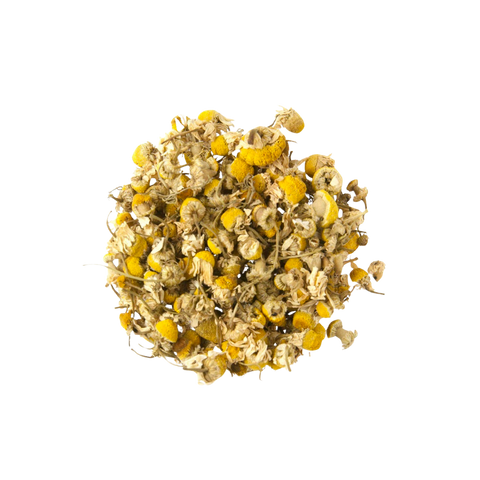
Cardamom
Also on the less-tested side of essential oils for nausea relief, cardamom essential oils have been gaining attention for their mitigative properties on nausea and vomiting in recent years.

Fennel
Fenchone, the key component of essential oils of the fennel plant, have demonstrated efficacy at having antiemetic properties, as well as antidiarrheal, antimotility, and mitigating symptoms of dysmenorrhea. Interestingly, the horticultural waste of fennel is now being considered harvested for important terpenoids like limonene, nerol, and anethole.

What types of nausea are most effectively relieved by aromatherapy?
Post-Operative Nausea and Vomiting (PONV):
The combination of anesthetics and pain medications used during surgical operations disrupts communications between our stomachs and our brains. While the primary disruption involves our 5-TH3 receptors (elaborated on below), several other chemical pathways are involved, making essential oil blends particularly effective at mitigating these symptoms multimodally.
Chemotherapy-Induced Nausea and Vomiting (CINV):
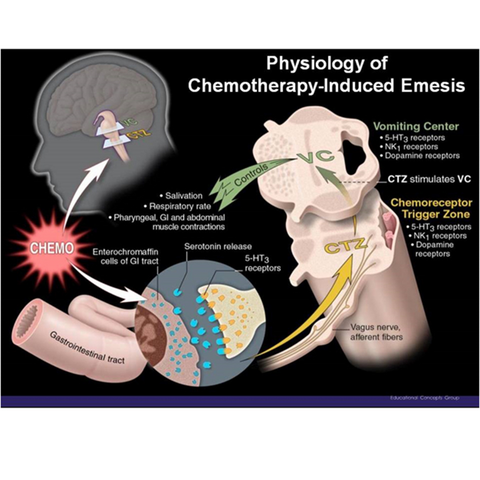
The chemicals involved in chemotherapy also interrupt the biochemical pathways mentioned above, and clinical aromatherapy is becoming more of a staple in integrative oncology programs that combine a variety of complementary and alternative therapies in their treatment and symptom management regimens.
Pregnancy-Induced Nausea and Vomiting (Morning Sickness):
One of the most well-supported applications where essential oils and aromatherapy have proven effective at mitigating nausea has been pregnancy-related nausea and vomiting, or morning sickness.
Opioid-Induced Nausea and Vomiting (OINV):
Similar to PONV, which generally involves some sort of OINV due to the pain medications used during medical procedures, patients experiencing specifically opioid-related symptoms of nausea and vomiting can ease these symptoms with aromatherapy along with more conventional medications and treatments. Essential oils and aromatherapy can also help with pain relief, potentially reducing the amounts of opioids used and prescribed post-operatively.
Anxiety-Related Nausea and Vomiting:
Aromatherapy is already a well-established option for treating symptoms of stress and anxiety, so it can provide relief both on its own or in tandem with antiemetic essential oils to combat these symptoms.
Motion Sickness:
Although far less understood than other forms of nausea and vomiting, motion sickness can be alleviated particularly well with ginger essential oils. In posology studies, it has even been found that efficacy can be increased by the preemptive use of such treatments.
How does aromatherapy for nausea and vomiting work?
5-HT3 Antagonists

While the biochemical processes behind our experience of symptoms of nausea and vomiting are diverse and complex, the most well-understood mechanism of action regarding essential oils for nausea relief deals with those which act as 5-HT3 antagonists. 5-HT, or 5-hydroxytryptamine, refers to the monoamine neurotransmitter and hormone we all know more commonly as serotonin.
Mark Kohoot, CEO and founder of Aeroscena, the parent company behind Ascents Clinical Aromatherapy, has written previously on our blog:
"5-HT3 receptor antagonists work by blocking the binding of the serotonin released by the GI tract due to trauma, such as chemotherapy, to the nerve receptors that transmit impulses to the vomiting center of the brain, located in the medulla oblongata. This greatly reduces the probability of a patient feeling nauseous and therefore vomiting.
While it may seem strange to think that a substance delivered via the olfactory system could affect the GI tract, scientists who have been studying this phenomenon would be much less surprised. This is because the intestines are home to many different receptors -- including those of the olfactory variety. Therefore, when a patient inhales an essential oil with 5-HT3 antagonist properties, it can help prevent nausea and vomiting, even though it isn’t processed through the digestive system."
CINV Mechanism Emesis
Afferent messages, those containing sensory information from all over the body sent to the central nervous system (CNS), and efferent messages, motor information sent from the CNS out to different parts of the body, travel up and down our vagal nerves between our gastrointestinal systems and our brains. We can experience symptoms of nausea when our stomach senses something in it that shouldn't be and sends a message up to our brain to send it back out, but the biochemical pathways involved can also be muddled and crisscrossed by things like anesthetics, opioids, or even just by a disconnect in what we see and feel, as is the case with motion sickness.
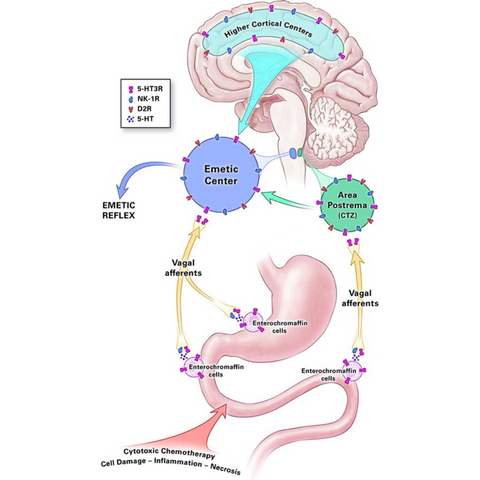
Certain essential oils have properties that can reverse or balance out these disruptions in our natural state of non-vomiting homeostasis, and because of the proximity of our olfactory system to our brain, the inhalation of these oils, or aromatherapy, can provide near-instantaneous relief.
Fun Fact:
If you're wondering how the antagonistic effects of these oils on 5-HT3 receptors are studied, you might be surprised to find out that the vast majority of this research is conducted in frog eggs. The current go-to model system involves the oocytes of the African Clawed Frog, Xenopus laevis, nearly ubiquitous in even the most remotely exotic pet stores. Many of the features that make it a good pet also make it a good model organism, including ease of care and relatively long lifespan, however, its oocytes, while still being numerous, also grow much larger than those of similar species, reaching up to 1.3mm, making them more convenient to work with without sacrificing sample size.

Xenopus Laevis
Why should essential oils be used for nausea relief?
Two of the most common medical treatments for nausea and vomiting used today are scopolamine and Zofran (ondansetron), and while these are effective in mitigating symptoms, they also come with increased costs and negative side effects, including headache, constipation, diarrhea, and dizziness, and scopolamine use can also result in blurred vision and urinary problems.
The total number of prescriptions for ondansetron in the US rose from over 6.5 million to nearly 12 million from 2013 to 2019, and its adverse effects can also include prolongation of the QT interval, which can lead to the potentially fatal arrhythmia known as torsades de pointes, aside from those listed above.
In preliminary studies, the use of clinical aromatherapy and essential oils has actually been shown to outperform some of the more standard protocols followed for the treatment of symptoms of nausea in post-operative contexts. By incorporating complementary and alternative antiemetic therapies like aromatherapy, hospitals could reduce overall healthcare costs and improve the experience and outcomes of their patients.
Ascents® Clinical Aromatherapy for Nausea Relief
The Ascents Nausea Relief No. 44 essential oil blend combines the well-rounded antiemetic effects of ginger, spearmint, cardamom, and fennel. It has been proven effective with rigorous clinical trials, including studies conducted in an oncology setting at Moffitt Cancer Center and pediatric palliative care at Nebraska Children's Hospital.
Nausea Relief No. 44 Clinical Aromatherapy Essential Oil Inhaler
Nausea Relief No. 44 Clinical Aromatherapy Essential Oil Patch
Nausea Relief No. 44 Clinical Aromatherapy Essential Oil Blend
It is available in the form of personal inhalers, wearable MRI-safe patches, and bottled oils, and you can request samples by completing our sample request form, or by calling us at 800-671-1890.
Ascents Clinical Aromatherapy - Recommended by Doctors, Used by Hospitals®







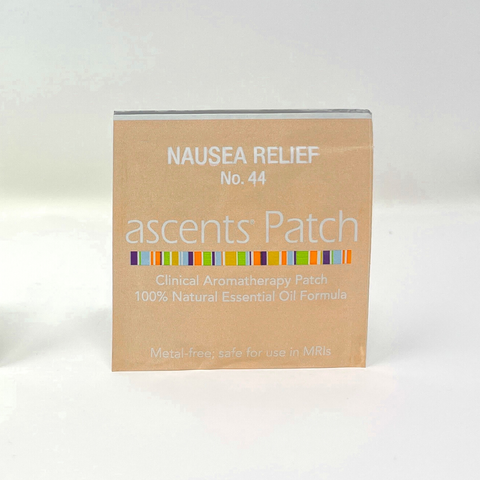
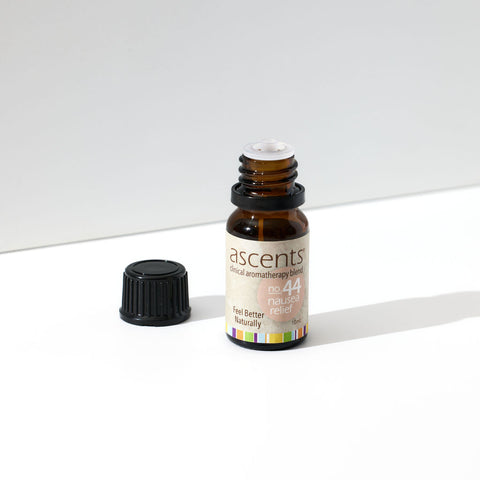


Leave a comment
This site is protected by hCaptcha and the hCaptcha Privacy Policy and Terms of Service apply.